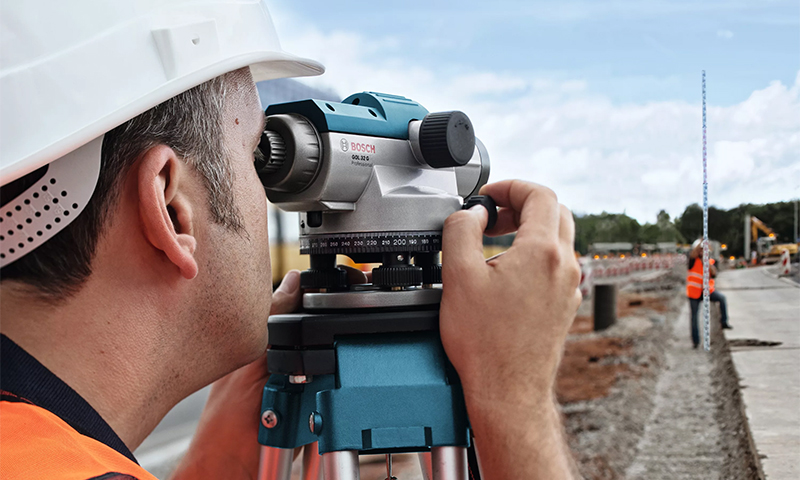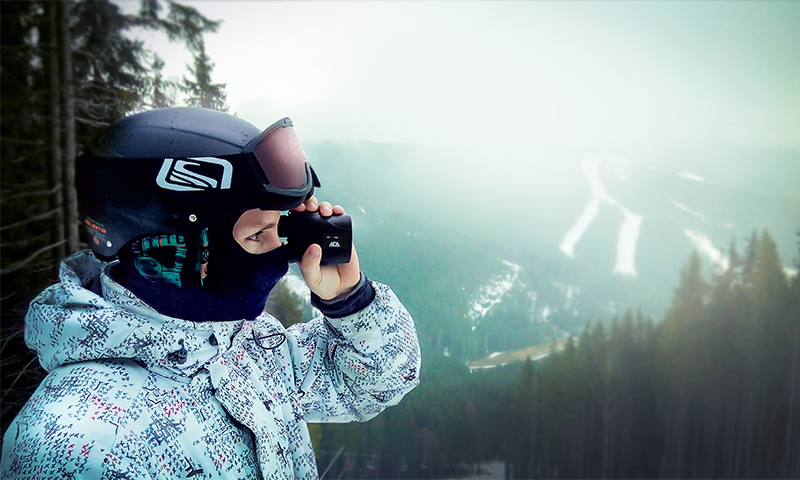The laser level is much higher in accuracy and speed of use than bubble models. Light diodes project smooth lines all over the wall at once, which allows you to instantly distribute the places of installation of partitions, mounting points, the position of windows and doors, and this greatly improves performance. Use this tool for plastering, suspended ceilings, slopes, hanging furniture and household appliances, masonry tiles and other things. In order to select the device that most closely matches the intended work, it is important to know its differences and key characteristics, in what this review will help.

Content:
The best manufacturers of laser levels - which company to choose
If you are too lazy to study the features of laser levels, then you can buy proven products of famous brands:
- ADA;
- Matrix;
- Bosch;
- Condtrol.
This will allow the use of modern equipment and facilitate the processes performed. But the technical structure of specific models is different from each other, which affects the areas of their application, as described in detail in ranking of the best laser levels.
To deepen the personal knowledge of the characteristics and nuances of the choice of laser levels it is necessary to read this article to the end.
The principle of operation and the device laser level

At the construction and repair can not do without a level. If everything was done without it, then we would have curved walls and skewed windows.
Bubble devices, even of very long length, require a lot of time for marking. It is necessary to walk on all the walls, set the correct position, leave points, connect them and only then get to work. The laser reduced it all to a few seconds.
Externally, the laser level, also called a level, is a small rectangular, square or cylindrical body mounted on a table or attached to a tripod, a wall clip. Outside are several lens lenses and a control panel with buttons. The device is compact and has a rubberized body, convenient for building conditions.
This tool helps to determine the vertical and horizontal lines for mounting structures by glowing a laser diode, which, through a system of prisms in the lens, turns into a beam and is displayed on the surface (wall, ceiling, floor).
So you can quickly beat off the benchmark on any plane and immediately get to work, without applying marks in pencil, because the laser glow can last for 10 hours or more.
To ensure the performance of its function, the device has the following elements:
1. Protective case;
2. Laser diode;
3. Transmitting prism;
4. Lens;
5. Fastening screws;
6. Leveling block;
7. Control buttons;
8. Power supply.
This has been reflected in many types of construction and repair works:
1. Installation of beacons under plaster and screed;
2. Pounding for corners;
3. Definition of the plane under the suspended ceilings;
4. Alignment of the position of windows and doors;
5. Creation of slopes;
6. Smooth wallpapering;
7. Installation of furniture and household appliances.
Types of laser levels
Linear

The level projects the radiation from the photodiode through an optical amplifier and turns it into a solid line. It can be vertical or horizontal. With a multipath model, it becomes possible to plan the planes in several spatial positions at once.
Such a tool is multifunctional and the most expensive in this group.It is used by professional builders for the distribution of places of setting partitions in the room, installation of doors, balconies, laying tiles.
Advantages:
- durable case;
- long work from batteries;
- there is a possibility of functioning from the network;
- wide range of attachable fasteners;
- many rays;
- auto alignment;
- 360 degree coverage;
- small error.
Disadvantages:
- high price;
- There are models with just one beam.
Rotary

The principle of operation is the same as that of the previous model, but the laser diode is attached to a rotating rotor, which is driven by a small electric motor. The head makes circular motions along the axis by 360 degrees, and the luminous mark leaves a pulsating mark on four walls at once.
This is used for work where it is important to create a smooth perimeter (fill the floor, suspended ceiling). The device is able to work at a small angle, which allows you to mark the diagonal of the structure (partitions). There is a separate directional beam to create plumb lines.
Advantages:
- 360 degree coverage;
- there is a block when a deviation;
- high accuracy;
- there is a remote d / y;
- there are models with tripods;
- large measurement range.
Disadvantages:
- vertically, you can only repel the plumb line;
- cannot be used when laying tiles on the floor.
Dotted

In these models, the laser head is fixed stationary, and the beam is rotated as a point, which is projected on four sides. This allows you to quickly determine the installation location of fasteners for hanging furniture (shelves, cabinets), household appliances (air conditioning, boiler) or decorative elements.
The tool facilitates both the identical arrangement of two objects on different walls, and the even fixation of one device on two points (a long shelf, a mirror). Apply them to check the flatness of the floor.
Advantages:
- long range;
- high accuracy;
- light weight;
- lower cost than linear;
- long service life;
- high degree of protection.
Disadvantages:
- to lay a solid line, you must manually connect the points on the wall;
- not suitable for tiles, partitions.
Laser level selection options

Measuring range
This number determines how far the light will be visible from the diode. The parameter varies from 3 to 200 m.
Too small figures will not allow marking in a spacious room, which will require multiple permutations of the device closer to the treated wall. Powerful devices, designed for many meters, will not be able to reveal their full potential in a small room, and an unreasonable overpayment will turn out.
1. For repairs in ordinary apartments (five-, nine-storey buildings) there is enough stock of 10 meters. This will mark the floor and ceiling, as well as determine the place of installation of partitions.
2. For spacious penthouses, where one room can be more than 10 meters in length, devices with a value of 20 m will be required.
3. At repair of dancing halls, sports complexes or a recreation center the level on 40-70 m is necessary.
Work with the receiver
There are buildings more than 70 m, so the function of interaction with the receiver is used here.
It is a rectangular apparatus with a pointer up / down and a block to capture the laser beam. At a considerable distance from the light source (level), even if the line is not displayed on the wall, the receiver feels it.
To use the additional apparatus, it is necessary to attach it to the wall on which the projection is made. The indicator will show where the receiver needs to be moved up or down.
When an accurate hit on the line of the beam (even when it is not visible to the human eye), the pointer will work. This will be our label. So you can beat off the level of cladding clapboard around the perimeter of a huge room or set the boundaries of the ceiling.
With this inventory, the distance of laying lines increases to 500 m. But there are models for a small lengthening of low-power levels. For example, the device itself is able to “beat” with light up to 20 m, and with a receiver up to 70 m.
Therefore, the ability to interact with an additional device and its range will be useful either for in-house repairmen with a short device action, who are in unusual conditions, or working on very large objects.
Alignment Type
There are two types of instrument leveling before starting work:
1. Manual - involves the use of bubbles to determine the correct position, which is regulated by lengthening / shortening the legs of the tripod and fixed. After that, you can turn on the laser itself and work with the beam.
2. In the automatic alignment type, the emitter is in a special liquid mixture, which always maintains a horizontal position relative to the ground. This allows you to put the device on a table or bracket and, regardless of the flatness of the latter, immediately get the correct readings on the wall.
Disable alignment
The automatic leveling has one drawback - with a slight tilt, the laser level starts to signal a failure or goes out completely. This helps to avoid mistakes if someone accidentally distorted the position of the apparatus, but also prevents you from using it to mark angles of 45 degrees.
Therefore, some manufacturers supply their devices with alignment locking function. It fixes the floating module in a rigid position and does not allow it to switch off when tilted.
Thanks to this, it is possible to carry out marking at different angles for applying decorative plaster, painting or placing interior objects in a special way.
Thread mount
The level may have a built-in sleeve with threaded internal threads for attachment to a tripod. This element helps to install the device with an uneven surface at a convenient height for adjustment. So it is easier to design a plane for a suspended ceiling or line under the edges of the wallpaper.
If a tripod is supplied with the tripod, then the fixing thread is the same for them, but when only the level is purchased, the tripod is purchased separately and it is important to make sure that the mounting diameter matches.
The mounting diameter is:
1. Inch;
2. 5/8 inches.
The second possibility of using threads is universal fastenings on the wall. They are fixed on the screw and conveniently placed close to the plane, which is useful when leveling and plastering the walls. Here, too, there are two types of thread and you should be careful when buying. There are adapters that allows you to attach the case to any device.
Ray color
The tool discards a red or green line. The green laser generates a wavelength of 532 nm, which is close to the ideal sensitivity of our vision (555 nm), but the red color has longer waves (635 nm), so it shines brighter, but is perceived worse for sight.
1. When working on a white or untreated wall, both options are visible equally well, so the finishers inside the room can choose any device according to the color of the photodiode.
2. For professional wallpapering and decorative painting of walls, you may need both options, because paints or rolls for walls may have different colors, which will be visually greased with the beam and may lead to inaccuracies. Contrast is important here.
3. For builders in open space (laying the foundation, exterior work, roofing) you have to work in bright sunlight, which prevents you from seeing the line, so only the green laser is chosen here. This is due to a spectrum that is more perceivable to the human eye.
Number of rays
The laser is able to generate from 1 to 9 rays simultaneously. The more of them, the more expensive the device is, but the more functional it is.
1. With one beam, you can beat off a straight line under the sockets, shelves.
2. With two, it is easier to set a 90 degree angle for mounting a window or door.
3. Four beams cover the perimeter, which is convenient for leveling the floor, ceiling, stretch, suspension, etc.
4. Eight rays on the ceiling, walls and floor in two projections allow you to plan the setting of partitions in two places at once.
5. The ninth is for plumbing and convenient for bricklayers in building corners.
Accuracy
Despite the tip-off laser measuring device has an error. It is displayed in mm and is 0.1-0.6 mm. This means that the level has a distortion of 1 to 6 mm for every 10 meters.
1. If you put the device in one wall and put a mark under the installation of lining, or a false ceiling, then in a room 10 m long, on the other side, the line will be 1-6 mm higher or lower. For such work it is not essential and any error will be suitable.
2. Laying tiles or gluing wallpaper requires a minimum deviation of 0.1-0.2 mm, since a small error can be strongly manifested at the other end of the wall so that it will be noticeable visually.
3. The minimum figure is also needed in spacious rooms of 20 meters or more, since there the error will grow two and more times.
Power type
The level is powered by batteries, battery or directly from the mains through a short wire.
1. From the battery device is able to continuously work up to 10 hours, after which the need to change the battery. Having bought them with a reserve, you can work a week and place the device in any place, but having forgotten the spare batteries, you will have to stop work and run to the store. This is an option for home repair.
2. Professional builders use models with batteries that are charged every night so they can work all day. There are no additional costs and ensured uninterrupted process.
3. In the case of a fast battery discharge, it is possible to connect the power adapter and work from the network. This slightly limits maneuverability, but does not stop the matter.
Weight
Levels can be from 140 g to 5 kg. This determines the possibility of their fixation and resource use.
1. Models up to 1.5 kg can be mounted on the wall;
2. Models from 2 kg are installed only on the table or on the floor;
3. More devices are placed on a tripod.
The heavier the apparatus, the more durable and durable it is, and is able to further reflect the rays. This is due to the materials of its finishing (aluminum protective arcs, thick body, shock absorbers), the size of energy storage devices and optics for beam reproduction.
1. For repairs in the apartment there is enough appliance up to 500 g;
2. Builders in large buildings use levels of 600-1500 g;
3. For large buildings buy models weighing up to 3-5 kg.
What laser level to choose

1. To align the beacons under the plaster, a linear device with 4 beams of red color, 5/8 thread and fastening to the wall is necessary. Weight 300-400 g and an accuracy of 0.4 mm. Measurement length 10-20 m without receiver.
2. To beat off the plane of the suspended ceiling, you need a rotational model with a red glow, measuring 15 meters long, a thread ¼ for a camera tripod, with an accuracy of 0.5 mm, without a receiver.
3. The device for slopes, installation of windows and doors, alignment of seam lines of tiles and wallpapering, needs two laser lines from a linear model, a range of 20-40 m, thread with an adapter for all types of mounting, 0.2 mm accuracy and batteries with an adapter . Use the alignment lock function for mounting decorative elements.
4. In order to evenly set the plasterboard partitions, you need a model with 9 rays, with a range of 10 m independently and 40 with a receiver, accuracy of 0.4 mm, automatic alignment, combined mounting and battery operation.
5. Correctly mark the holes in the wall for installation of hanging furniture, household appliances or decorative elements, as well as check the flatness of the floor. year
How much is the laser level

1. The device for leveling beacons will cost 5000-40000 rubles.
2. The level for designing the lines of the suspended ceiling, depending on the scale of construction, can cost from 3,500 to 130,000 rubles.
3. A tool for mounting elements with straight angles costs 2500-9000 rubles.
4. The device for marking the floor, walls and ceiling for partitions buy for 20000-30000 rubles.
5. The level for the installation of furniture and floor is estimated at 7500-30000 rubles.
It will be interesting to friends too







